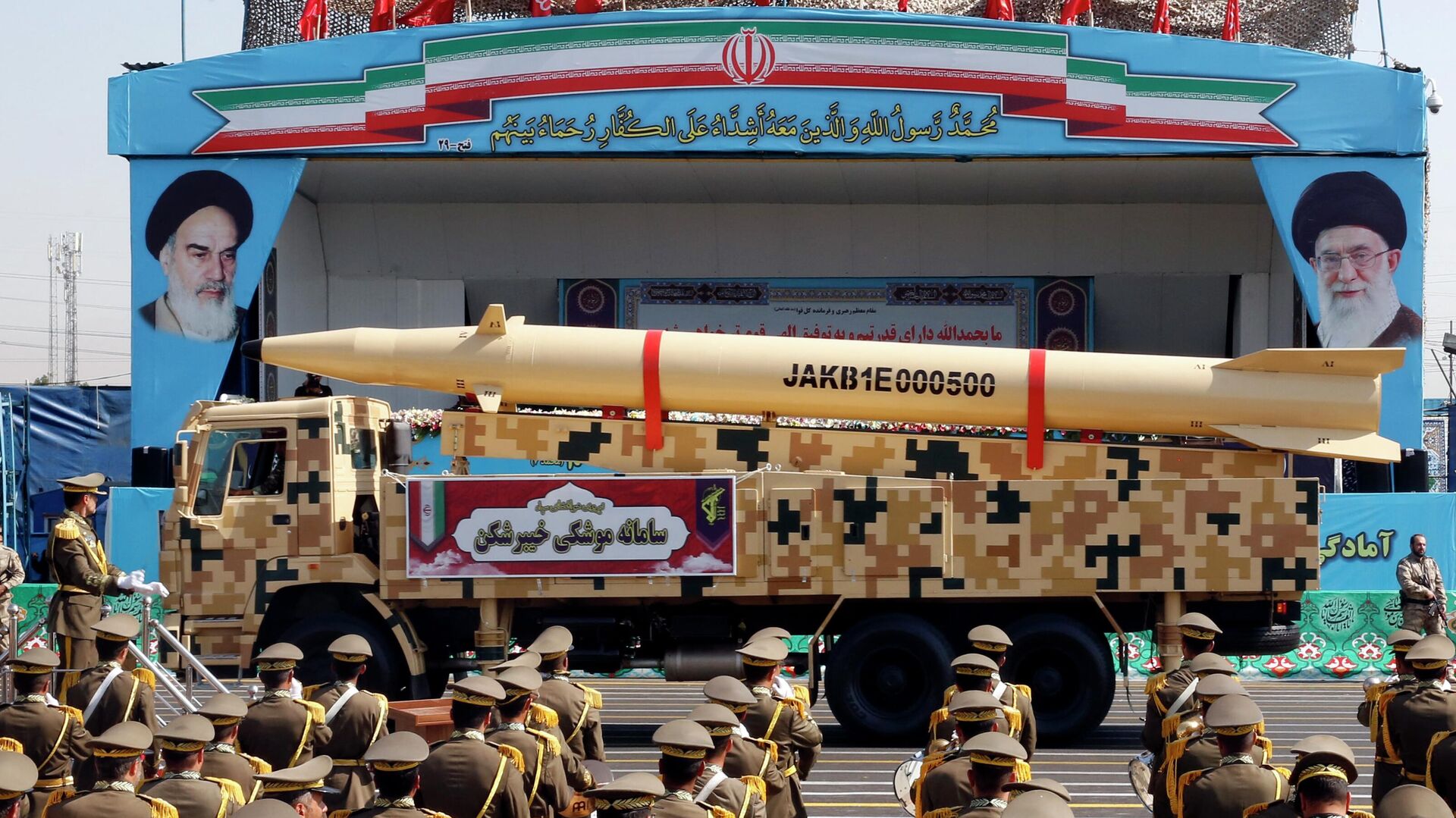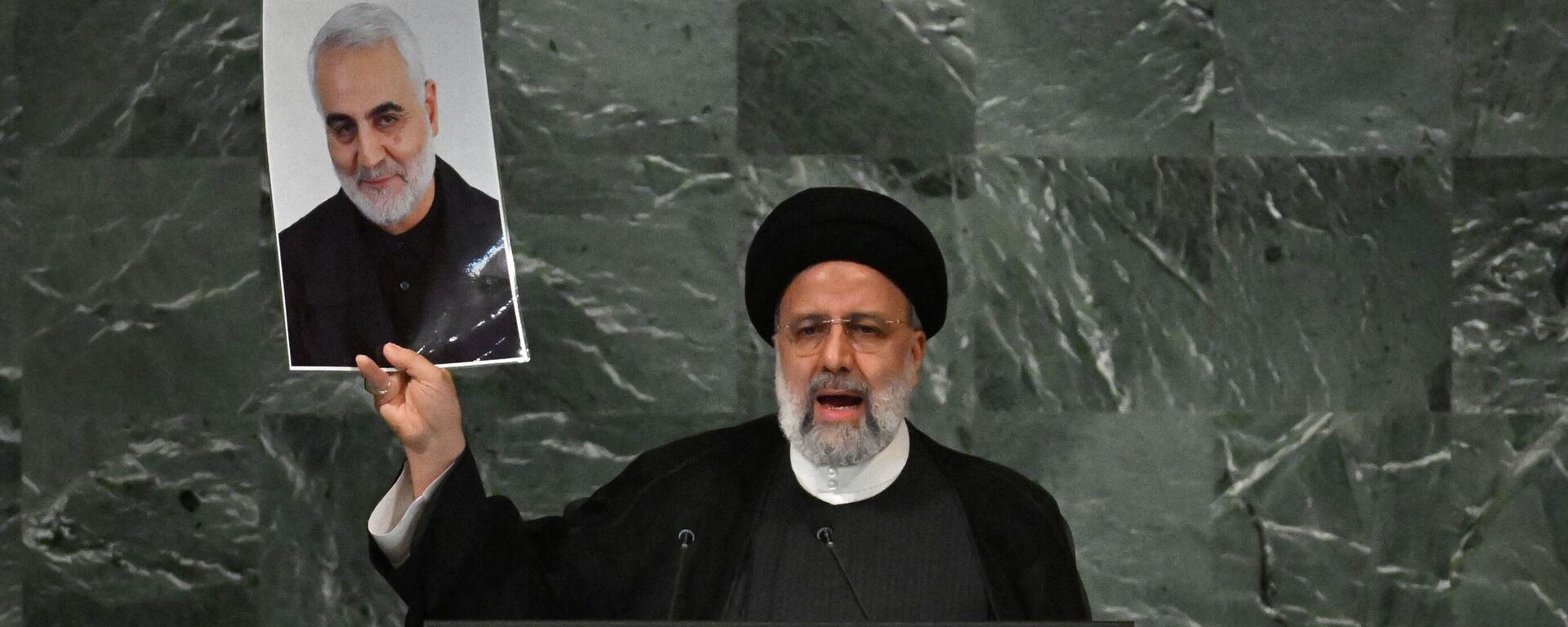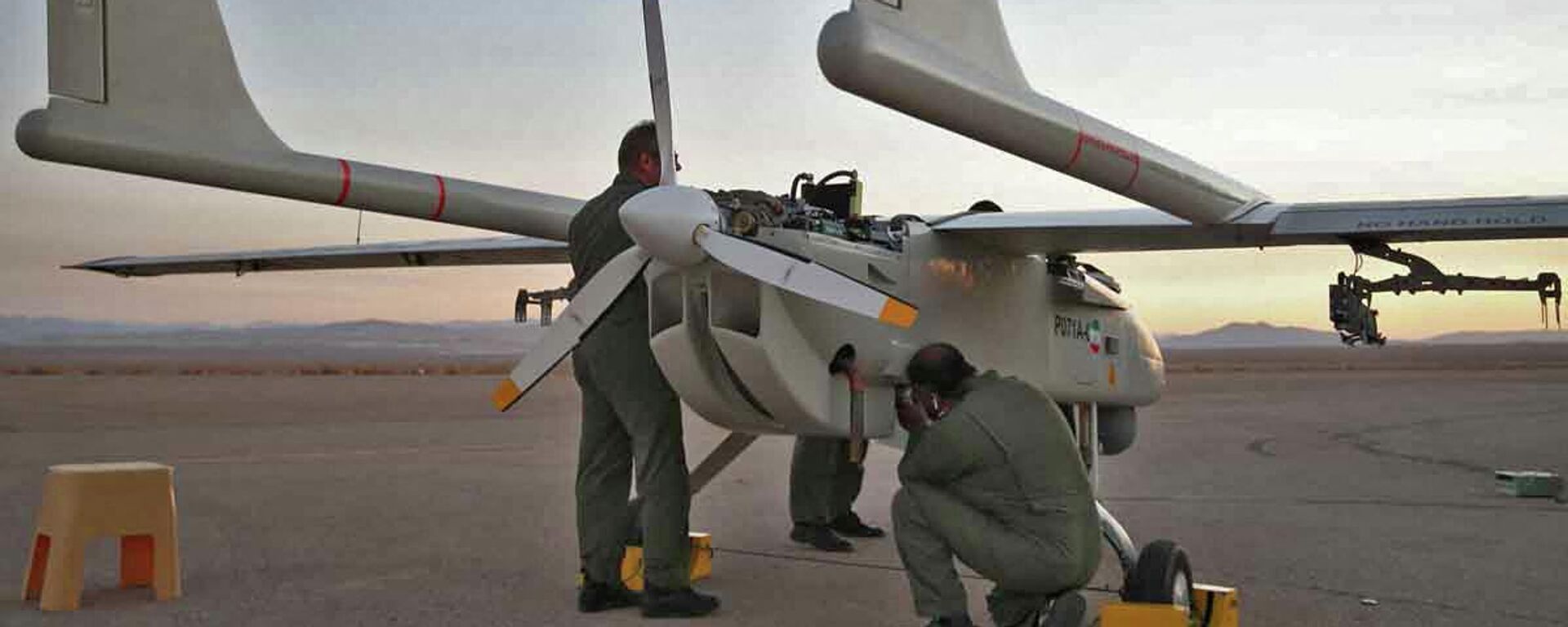Iran Unveils New Missiles, Drone at Parades Commemorating Iran-Iraq War of 1980-1988 – Photo, Video

© AFP 2023 /
Subscribe
Thursday is the 42nd anniversary of the Iran-Iraq War, a brutal, full-scale armed conflict which kicked off on September 22, 1980 with an Iraqi invasion of its eastern neighbor shortly after the Islamic Revolution of 1979.
Tens of thousands of servicemen from the Iranian Armed Forces, the Islamic Revolutionary Guard Corps (IRGC), border troops, police and Basij paramilitary militia units took part in a series of massive military parades held across the country and the Persian Gulf at the start of ‘Sacred Defense Week’, an annual week-long commemoration of the Iran-Iraq War of the 1980s.
Thousands of troops marched in downtown Tehran near the Mausoleum of Ruhollah Khomeinei, the late Iranian revolutionary leader who served as the country’s first Supreme Leader between December 1979 and June 1989, and as supreme commander of the armed forces during the war with Iraq.
Iran’s Armed Forces holding parades to mark start of Sacred Defense Week https://t.co/TKQYXAgHR9 pic.twitter.com/B08f0Gh0jb
— Press TV (@PressTV) September 22, 2022
Smaller parades and rallies were held in capitals and towns in other regions.
Iran’s Armed Forces Hold Massive Parades to Mark Sacred Defense Weekhttps://t.co/2aMegRIBRC pic.twitter.com/4OqAX4HnbM
— Fars News Agency (@EnglishFars) September 22, 2022
The display of military might included a broad array of Iranian-made defense systems, including radar, electronic warfare and air defense equipment, ballistic and cruise missiles, aircraft, drones, tanks, and warships.
The parade in Tehran saw the unveiling of a new surface-to-surface ballistic missile known as the Rezvan (lit. ‘The Gatekeeper of Paradise’), a liquid-fueled single-stage missile with detachable warhead with a range of up to 1,400 km. The Rezvan can be fired from a range of launch platforms.
🇮🇷|The Rizvan surface-to-surface ballistic missile of the #IRGC Aerospace Force was unveiled for the first time in todays parade. This missile has a range of up to 1400 km.#Iran #ایران #سپاه pic.twitter.com/d5e2a2vug2
— Unit 085 (@Unit085) September 22, 2022
Other new systems spotted at the event included Kheibarshekan (lit. ‘Castle Buster’) missile, a solid-fueled missile with maneuverable reentry vehicle (MaRV) capability and a declared range of 1,450 km.
Both missiles have a range sufficient to strike Israel – Iran’s main regional foe, plus virtually any US military installation in the Persian Gulf and throughout the Middle East.
Observers at the event also spotted the Arash drone, an ultra-long-range precision suicide drone which Iranian media first revealed earlier this month and which Tehran says has a strike range of up to 2,000 km. The drone is named after Arash the Archer, a heroic figure of ancient Persian mythology.
🇮🇷| #Arash #Drone unveiled also in today’s #IRGC military parade. This #UAV was portrayed in #Iranian media as the world’s longest range suicide drone and its believed to reach targets as far as in #Israel. #Iran #سپاه pic.twitter.com/6Sr7gKr4eo
— Unit 085 (@Unit085) September 22, 2022
The Sevom Khordad (3rd Khordad), the road-mobile air defense missile system that Iran used to shoot down a $220 million US Global Hawk Drone over the Strait of Hormuz in 2019, was also displayed.
New World Order
Thursday’s commemorations come a day after Iranian President Ebrahim Raisi’s attack on American imperialism at the United Nations General Assembly in New York, and his announcement that the existing world order, where international organizations have become “instruments of repression,” and where economic sanctions are used to leverage pressure on other countries, has lost support around the globe.
“We are now witnessing a change in the world order. This [US-dominated] order has lost its support among the planet. All over the region, we see the defeat of this old system,” Raisi said in his GA speech.
Speaking to reporters on the sidelines of Thursday’s parade, Armed Forces Chief of General Staff Mohammad Bagheri revealed that Iran, Russia and China plan to hold fresh joint naval exercises in the Northern Indian Ocean later this fall.
As many as 1.2 million people died in the Iran-Iraq War of 1980-1988, with the war beginning after then-Iraqi leader Saddam Hussein tore up the 1975 Algiers Accord on the settlement of border disputes and launched an invasion of Iran to try to seize the country’s oil-rich Khuzestan province. Hussein’s act of aggression enjoyed the support of the United States and its allies, and Washington and Western European countries shipped Baghdad billions of dollars in arms and the precursors for chemical weapons which the Iraqi army would end up deploying against Iranian military positions and cities.
The war ended in a stalemate brokered by the United Nations after both sides exhausted one another in years of brutal fighting. Iran did not retaliate in kind to Iraq’s chemical weapons use, despite its legal right to do so under existing treaties, and destroyed its chemical arsenal in the 1990s.
The Iran-Iraq War also witnessed the Islamic Republic’s first experiments with drone technology. Three-and-a-half decades on, Iran has become a major drone power, developing and manufacturing over three dozen different domestic unmanned aerial vehicle designs.



